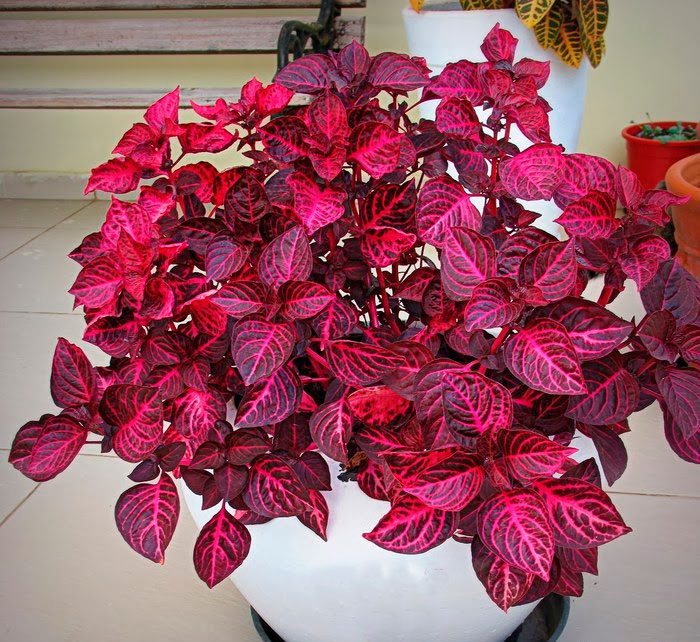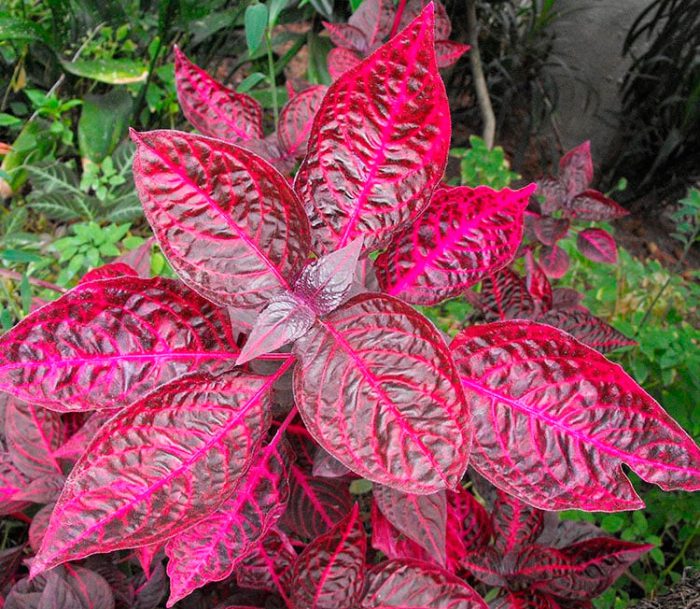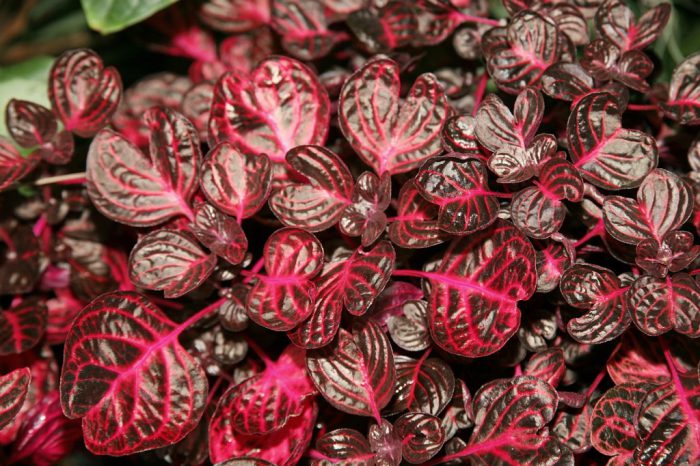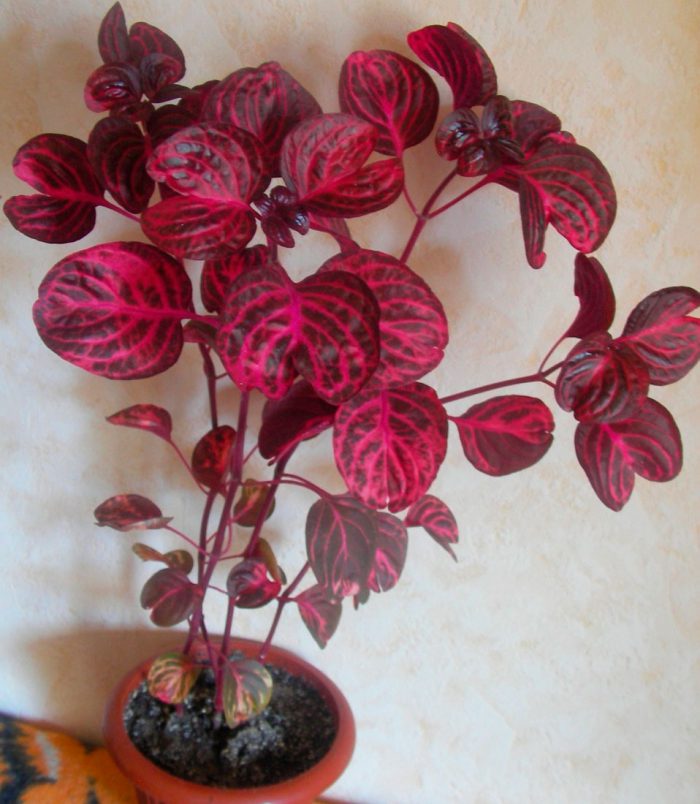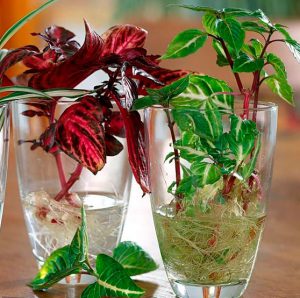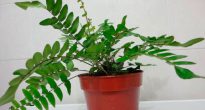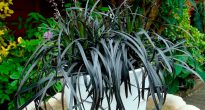A perennial plant like irezin is directly related to the amaranth family. It is found naturally in North, South and Central America, in the Galapagos and Antilles, as well as in Australia. This genus unites about 80 species. In home floriculture, only 2 types are popular, namely: Herbst's irezin and Linden's irezin. This highly decorative plant can reach a height of 60 centimeters. Outwardly, it is similar to a compact shrub. And it gained its popularity thanks to rather spectacular leaves, which have a bright, unusual color. Juicy raspberry-beet leaves are oval or rounded with a notch in the middle. There is also a form with green foliage, and it is called aureoreticulata. At home, it practically does not bloom. But even if it does bloom, the small yellow-white flowers do not represent any particular decorative value.
Content
Main types
Irezina Linden (Iresine lindenii)
This herb is a perennial. His homeland is Ecuador. Its red-crimson leaves have distinct streaks, as well as an oval-lanceolate shape. If you pinch the upper shoots, then the bush becomes very lush, and its shoots do not become lignified. This irezin is just perfect for creating a "rug" in clubs.
Irezina Herbst (Iresine herbstii)
The homeland of this plant is the tropical forests of Brazil. This is a perennial shrub with rich crimson leaves. Rounded leaves have a not very large notch at the top. They are painted in a dark beetroot color, and their veins are slightly lighter, but also very bright in color.
A form such as aureoreticulata has green foliage, and its veins are rather variegated yellow. The stems themselves are colored red.
The wallisii form has smaller leaves in comparison to other forms. They are also red in color with an unusual metallic hue. This plant is rather short and has a lush bush.
Caring for irezin at home
This is a rather undemanding plant to care for, which adapts well to low humidity in the room (especially during the heating period). But it should be borne in mind that irezina simply loves the direct rays of the sun. She needs them to preserve the rich color of the foliage.If the plant does not get light, then its leaves will become faded and lose their decorative effect. It grows very quickly, so it just needs regular pruning.
Illumination
Choose a location that is well lit. So, irezin can be put on the window sill located in the southern, southeastern, and also southwestern parts of the room. If there is little light, then the stems will become elongated, and the leaves will become faded.
How to water
Watering in the warm season should be abundant. It is worth considering that the potted substrate should be constantly slightly moistened, but not wet. Do not overflow, do not dry out the soil. In winter, watering should be reduced, and with the onset of spring, water again abundantly. However, in winter, the soil surface should not dry out between waterings.
Air humidity
It does not require high humidity. But still, from time to time you need to spray the leaves. To do this, use exclusively settled soft water.
Temperature
There are no special requirements, but it should be remembered that this is a rather thermophilic plant. In winter, it must be put in a warm place. So, the temperature in this place should be about 15 to 22 degrees.
Fertilizer
It is necessary to fertilize irezin during intensive growth, which is observed in the spring-summer period 1 time in 7 days. For this, mineral and organic fertilizers are used. In the cold season, this plant also needs feeding. It is necessary to apply fertilizers to the soil 1 time in 4 weeks and for this use only ½ part of the dose recommended on the package.
Transplant features
The transplant is carried out, as a rule, in the spring. To create a suitable soil mixture, it is necessary to combine turf, humus and leafy soil with sand in a ratio of 2: 2: 2: 1. In the warm season, the flower can be planted in open ground.
Pruning
Since the plant is fast growing, it needs pruning. It is usually carried out before the start of active growth in the spring. You can also pinch the twigs to form a beautiful bush, and this procedure can be carried out both in spring and in summer. The trimmed parts of the shoots can be put on cuttings.
 Reproduction methods
Reproduction methods
In springtime, irezina can be propagated by cuttings. They should be approximately 10 centimeters long. For rooting, they are planted in a mixture of peat and sand, taken in equal proportions. They need systematic watering, as well as heat (21-14 degrees). Rooting is very fast. In just a few days, roots appear and from that moment on, the cuttings are looked after as if they were an adult plant.
Diseases and pests
Green aphids can settle on the plant. It is necessary to carry out treatment with an insecticide containing pyrethrum, which will get rid of pests.
A worm can also settle on this flower. If there is waterlogging of the soil, the leaves and roots may begin to rot.
This gorgeous plant is most often grown as a compact bush or as an ampelous plant. Also, in the warm season, it can decorate any flower bed. Irezina goes well with almost any plant. On flower beds and ridges, Linden's irezin is most often grown.

